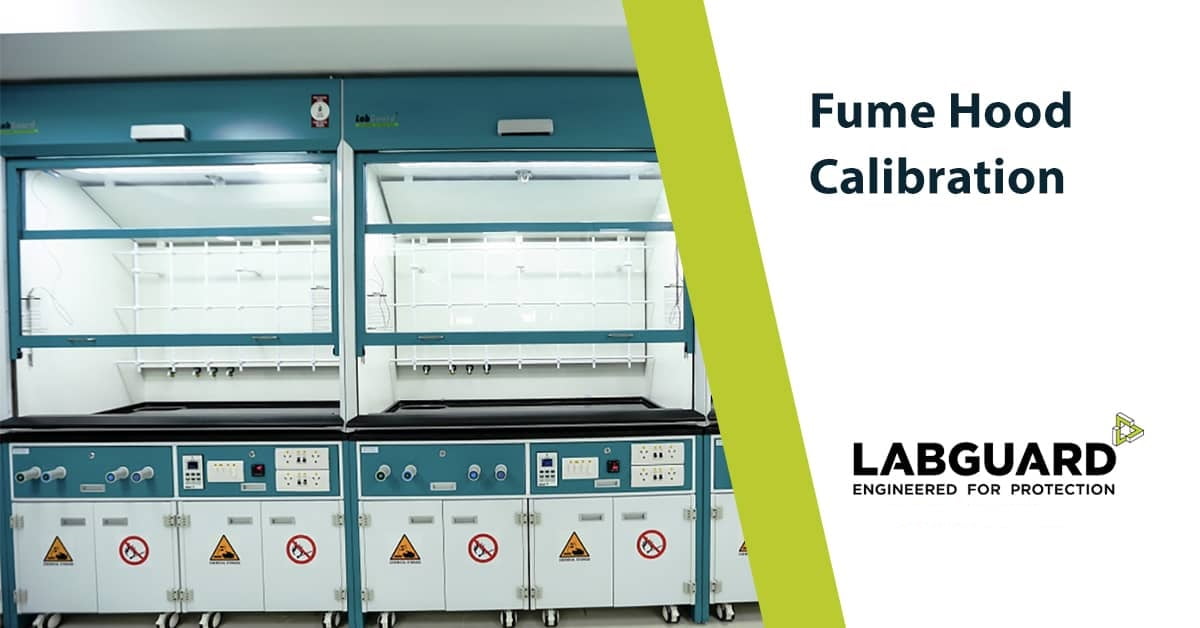A fume hood needs adequate airflow to remove, contain and safely discharge airborne chemical contaminants. It is therefore important to ensure adequate airflow. An Air Flow Monitor (AFM) is an audiovisual meter attached to the Fume Hood side post and indicates the airflow status in real-time. It is important for safety and efficiency that the AFM and the Fume Hood, in turn, must be periodically calibrated and certified.
We know that the standard accepted range of face velocity is 100 fpm (0.5 m/s) + 20%. That means the range should be around 80 to 120 fpm (0.4 to 0.6 m/s). This reading must be taken at several points on an imaginary grid in the plane of ‘Fume Hood Opening’ and averaged out to give accurate readings. This method of calibration using face velocity as an index is widely accepted in laboratory workspaces.
The latest and most accepted standard for the Face Velocity test is ASRAE 110-2016. It must be pointed out that this standard specifies a range of face velocity and not a singular value.
| Parameter | ASHRAE 110-2016 |
| Measuring Instrument | Thermal Anemometer |
| Face Velocity Rage | 30-400 fpm |
| Required Accuracy | (+/-)3% of reading or (+/-) 3fpm |
| Rectangular Grid Pattern Size | Area<1 ft sq, larger side <13 inches |
| Sampling Method | 20 Velocity readings taken at the center of each grid |
Face Velocity Testing Procedure
- Manufacturer specified hood model, dimensions, Sash opening height, Design face velocity, and Exhaust Volume in CFM are noted.
- Open the sash up to the defined safe opening height.
- An imaginary grid is formed across the opening with a rectangular area <1ft sq, with the larger side no greater than 13 inches. The readings are recorded with a thermal anemometer, at the center of each grid rectangle. The anemometer must be mounted on a stand, capable of taking readings at the rate of 1/sec, for 20 seconds, and averaging out the readings.
- The recorded average of each grid shall be averaged to give the total average face velocity of the fume hood.
This calibration process must be carried out by a trained engineer with a calibrated thermal anemometer. The test must be certified with documentary records. Once the fume hood calibration is done, the airflow monitor is electronically calibrated using these readings. Thereafter, it displays the live face velocity and airflow status in real-time.
For face velocity tests of hoods with VAV (Variable Air Volume) systems, velocity readings are carried out at three positions of sash opening: 25% sash open, 50% sash open, and full sash open. The average face velocities for all sash positions shall then be compared with design specifications.
One must remember that for full-scale calibration two additional tests, the Smoke Pattern Visualization test and the Tracer Gas Containment tests are recommended. For routine calibration, the face velocity test serves the purpose.
A less commonly followed (European) standard for face velocity-based calibration is EN14175. The test procedure is similar but has different specifications for the grid point-based face velocity measurements.


